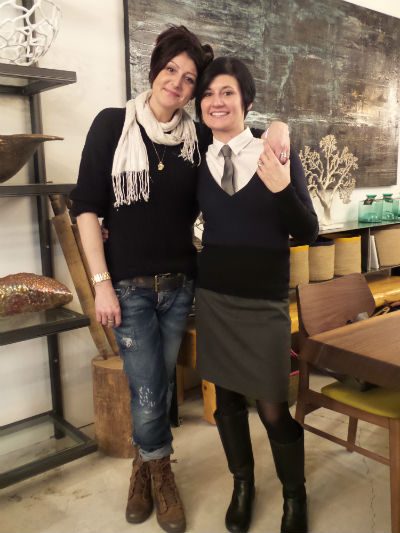How do you cope after a brain injury?
“I finally have a job again,” she said smiling while slow tears streamed down her face. “My wife gave me that.”
Vanessa Vanderidder, 38, sits in her large, open studio in the basement of her home in London, Ont. shared with her wife Marti. With a beer in hand, her clothes and shoes are covered with paint. Ben, one of the seven foster cats, sits on her lap. 14 canvases of abstract art line the room. Splashes of blue, green, purple, red.
Vanessa is an artist. Although that wasn’t her career before the accident.
It was June 7, 2006 around noon. Vanessa was on her lunch break after a particularly difficult day at work as a special needs teacher with the Thames Valley District School Board.
Vanessa sat at a stop light, window cracked open, smoking a cigarette after an exhausting morning.
Driving past was a truck filled with boulders. Overfilled. Going 70 kilometres per hour. Boulders fell to the ground, splitting upon impact—a piece bounced off the ground, flew through Vanessa’s open car window and sliced the top of her head.
She was pronounced dead three times.
Vanessa met Marti McGrenere in 2013. “It was Halloween, and I’m not a fan of Halloween,” Vanessa explains.
Marti interjects, “I love Halloween!”
Dressed in what she describes as a “slutty copper outfit,” Vanessa and her friend walk into the Wortley Road House in London, Ont.
“I walked into the bar, and I don’t even think I had my coat off. And I saw Marti. I’m like, holy shit.”

Since this meeting, the two are inseparable; having only spent three nights apart since December 2013. However, when you’re trying to get to know someone, often the first question you ask is: what do you do for a living?
“I fucking hate that question.”
Vanessa’s entire world was changed after her injury.
Her vision worsened, her body would shake, anxiety crept up unannounced. Multitasking became impossible and moving lights were daunting; simple things such as emptying the dishwasher took twice as long, and she was exhausted after it.
The brain is hidden. You can’t see the damage done by a brain injury.
Vanessa explains how people sometimes see her, “Wouldn’t it be nice to stay at home. Wouldn’t it be nice to sleep-in every day. Wouldn’t it be nice to not have to work.”
She’s not in a wheelchair. Her disability isn’t obvious. She’s a silent sufferer.
But Vanessa didn’t want to stay at home.
She wanted desperately to go back to work. She used to be a teacher. She used to educate “beautiful young minds.” And now, Vanessa says “she can’t put a sentence together. I’m sitting at home wondering why the fuck not.”

So how do you cope? Vanessa tried to remember what she did to assist people with disabilities. The answer: sensory play.
“These two little fingers,” she says holding up her index finger and thumb, “I couldn’t really feel them.”
So she started using oil paints and used her fingers as a paint brush. Finally, she was able to sit still for hours and paint—something she wasn’t able to do since her injury as ADD was a side effect for Vanessa. It was a coping mechanism. It was an expression of herself. It became her “healthy drug.”
“I was always artsy-fartsy, as my mother would say,” Vanessa explains. However, this was never an immediate career choice.
Vanessa met Sylvie Roth, owner of Roth Design Inc., in 2012.
Roth noticed some of Vanessa’s artwork while searching for an art piece for a client. From there, Vanessa started to work with Roth more frequently. One of her pieces was in Our Homes Magazine, while others were displayed in Roth’s show room.
At this point, Vanessa wasn’t marketing her art—promoting her art is now done by her wife.
After work, Marti comes down to Vanessa’s studio. She watches Vanessa paint, takes photos of her work to post on the Instagram account or website she created.
“The most beautiful thing,” Vanessa explains, “is the title of the Instagram… what is it my love?” She asks turning to Marti.
“Page by her partner. Her work is amazing. It deserves to be shared,” Marti replies.
 “Like, that’s beautiful.”
“Like, that’s beautiful.”
Marti is passionate about Vanessa’s work, and passionate about helping Vanessa. From researching art galleries, donating part of sales to All Breed Canine Rescue or the Brain Injury Association, to contacting art curators, Marti acts as Vanessa’s manager.
“I love that it gives Vanessa a sense of purpose that her life lacked after her injury,” Marti says. “I want her to feel as good as I feel when I leave work. I want her to have that same feeling back.”
Now, Vanessa doesn’t hate the question: what do you do for a living?
“I say I’m an artist.”
Find out more about Vanessa’s art at www.vzitaart.com
